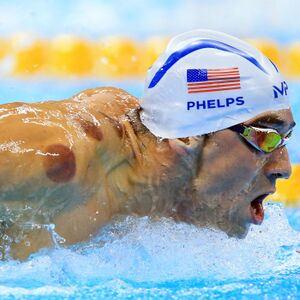Modern Cupping from Clinical Approach: Difference between revisions
(added text, reuse citation) |
(added text and citation) |
||
| Line 11: | Line 11: | ||
=== Evidence to date: === | === Evidence to date: === | ||
An overview of systematic reviews assessed the safety and effectiveness of cupping therapy for 11 disease through an evidence based approach<ref name=":1">Cao H, Han M, Zhu X, Liu J. [https://www.sciencedirect.com/science/article/pii/S2095754815000277#abs0010 An overview of systematic reviews of clinical evidence for cupping therapy. Journal of Traditional Chinese Medical Sciences.] 2015 Jan 1;2(1):3-10.</ref>. Results of multiple systematic reviews showed that cupping therapy (alone or combined with other interventions) was better than medications (or other interventions alone) for different diseases included cervical spondylosis and low back pain, although one review reported adverse effects like increase in pain and tingling after cupping treatment<ref name=":1" /> | An overview of systematic reviews assessed the safety and effectiveness of cupping therapy for 11 disease through an evidence based approach<ref name=":1">Cao H, Han M, Zhu X, Liu J. [https://www.sciencedirect.com/science/article/pii/S2095754815000277#abs0010 An overview of systematic reviews of clinical evidence for cupping therapy. Journal of Traditional Chinese Medical Sciences.] 2015 Jan 1;2(1):3-10.</ref>. Results of multiple systematic reviews showed that cupping therapy (alone or combined with other interventions) was better than medications (or other interventions alone) for different diseases included cervical spondylosis and low back pain, although one review reported adverse effects like increase in pain and tingling after cupping treatment<ref name=":1" />Overall, Cupping may be beneficial for pain relief, on the other note, the insufficient number of reviews and the poor qualities of the original studies couldn't firm the conclusive results. | ||
== Benefits on MSK problems == | == Benefits on MSK problems == | ||
Revision as of 01:33, 29 April 2023
This article is currently under review and may not be up to date. Please come back soon to see the finished work! (29/04/2023)
Top Contributors - {{Special:Contributors/Template:Modern Cupping Therapy from Clinical Approach}}
Introduction[edit | edit source]
Cupping Therapy is a universal practice in the east and west, where it's popularity has been spanned in the modern communities when Michael Phelps-Olympic gold medal winner, was seen with cupping marks in Rio de Janeiro in Brazil 2016[1]. Cupping Therapy is an alternative medicine that sometimes referred to suction therapy based on it's mechanism of action or Myo-fascial Decompression Therapy[2]. Different types of cupping therapy have been used to treat different diseases with different conditions that include improvement of sports performance[1]
Evidence to date:[edit | edit source]
An overview of systematic reviews assessed the safety and effectiveness of cupping therapy for 11 disease through an evidence based approach[3]. Results of multiple systematic reviews showed that cupping therapy (alone or combined with other interventions) was better than medications (or other interventions alone) for different diseases included cervical spondylosis and low back pain, although one review reported adverse effects like increase in pain and tingling after cupping treatment[3]Overall, Cupping may be beneficial for pain relief, on the other note, the insufficient number of reviews and the poor qualities of the original studies couldn't firm the conclusive results.
Benefits on MSK problems[edit | edit source]
Pain:(neck, heal, backpain).
Trigger point:
Post partum:
Peripheral nerve entrapments:
Benefits on Respiratory system[edit | edit source]
cough reflex,
Benefits on Lymphatic system[edit | edit source]
swelling, CRC cancer.
Benefits on sports performance[edit | edit source]
ITB , Planter fascia-ties, hamstrings, shin splint.
Case Scenario[edit | edit source]
Conclusion[edit | edit source]
Resources[edit | edit source]
- bulleted list
- x
or
- numbered list
- x
References[edit | edit source]
- ↑ 1.0 1.1 Musumeci G. Could cupping therapy be used to improve sports performance?. Journal of Functional Morphology and Kinesiology. 2016 Oct 27;1(4):373-7.
- ↑ References 1.Warren AJ, LaCross Z, Volberding JL, O’Brien MS. Acute outcomes of myofascial decompression (cupping therapy) compared to self-myofascial release on hamstring pathology after a single treatment. Int J Sports Phys Ther [Internet]. 2020;15(4):579–92. Available from: http://dx.doi.org/10.26603/ijspt20200579
- ↑ 3.0 3.1 Cao H, Han M, Zhu X, Liu J. An overview of systematic reviews of clinical evidence for cupping therapy. Journal of Traditional Chinese Medical Sciences. 2015 Jan 1;2(1):3-10.







